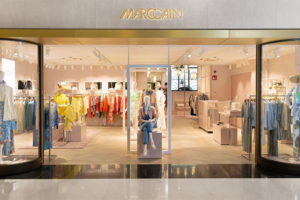By Reinhard Winiwarter
Top international brands are indispensable for shopping centers, in particular, since many have “anchor tenant potential.” After all, their clever marketing makes their products so desirable that their target groups buy readily. For the owners and operators of shopping centers, in turn, what makes these brands attractive is that they ensure stability in incomes and tenant mixes thanks to their deep pockets.
So life is blissful and there’s not a cloud on the horizon? Hardly. In these times of multi-channeling, top brands, in particular, are thinking through their locations decisions ever more thoroughly. They’re making their decisions to locate in a mall more selectively and are often simultaneously reducing the number of local shops.
The background to this development is well known: We are going through a phase in which the basic function of shopping centers is changing rapidly. They have long since ceased to be mere machines for covering demand. In order to succeed in the highly competitive market, they must position themselves as lifestyle centers. In other words: as places where people like to meet, communicate—and shop, of course, through whichever channels they choose. The German expression “Handel ist Wandel” means “retail is change” and it is one that can hardly be overused at this point.
Urbanization will continue to drive this development. In 2008 for the first time, more people worldwide lived in cities than in the countryside. The United Nations Population Fund expects around 5 billion urbanites by the year 2030. Growing, anonymous metropolises need places with high amenity value where people can socialize. The Internet plays only a minor role in this task.
What does this mean for shopping center developers and operators? Homo sapiens feel most at ease where they feel at home. These feelings in turn always have something to do with a certain individuality. It is the all-important task of developers and operators to arouse these “at-home” feelings among visitors. In this regard, some good approaches are already recognizable.
For this line of reasoning, the main focus is on malls’ foodservice offer. Food courts are gaining importance in the offer mix. Their area ratio in malls is therefore logically growing. Eat, drink, talk, laugh—as banal as it sounds, the satisfaction factor of these basic human needs is so decisive for the success of a retail property in the future. The “at-home feeling” hopefully triggered in this way will, in my opinion, become ever more important in determining whether someone visits a shopping center or prefers just to stay home.
It is, therefore, important to sing the praises of regional gastronomy concepts. Visitors to malls find themselves in these concepts. They are often already familiar with them from childhood. People increasingly appreciate regional gastronomy and retail concepts. This is confirmed unanimously by research in the field. The motto is regionality instead of global uniformity.
This slogan is a challenge for operators and developers insofar as they are the ones who must find “regional pearls” and offer them appropriate spaces—and these should not be hidden corners on the third floor. Consequently, operators and developers must risk giving regional concepts priority over long-standing, international players. It is not just about classic retailers but, in particular, about small service providers whose relevance is increasing. These are the numerous innovative local entrepreneurs who are the “talk of the town.” This requires that the malls are subsequently increasingly coupled with mixed uses. The malls of the future will thus be more colorful and regional. It’s an exciting prospect.
What is your opinion on this topic? Discuss it with us! Send your opinion to opinion@across-magazine.com !







![Titel_Across_1_24_Endversion[111270] Titel_Across_1_24_Endversion[111270]](https://www.across-magazine.com/wp-content/uploads/elementor/thumbs/Titel_Across_1_24_Endversion111270-qjpg2yp7x6msxzo90wpo62uop32tmjtjils84ezryg.jpg)
